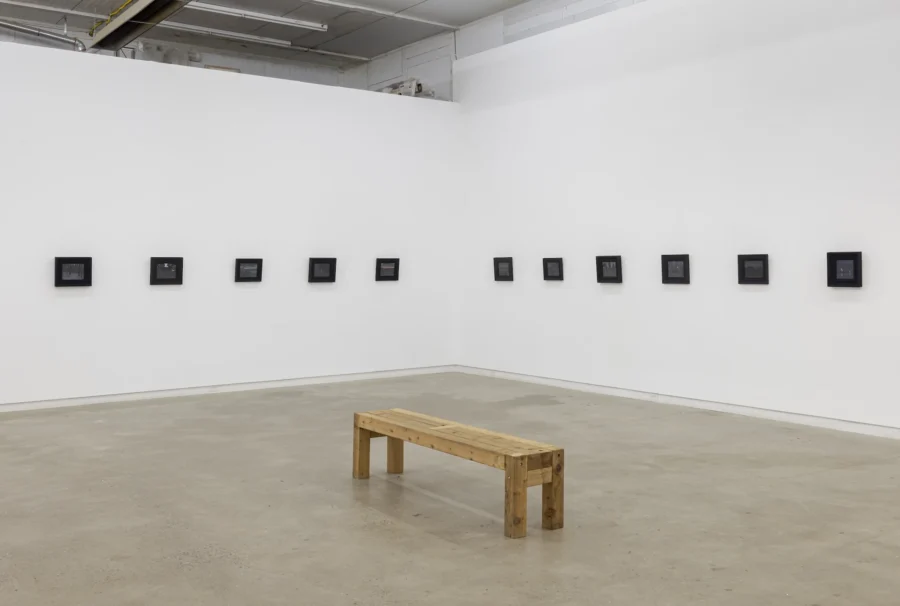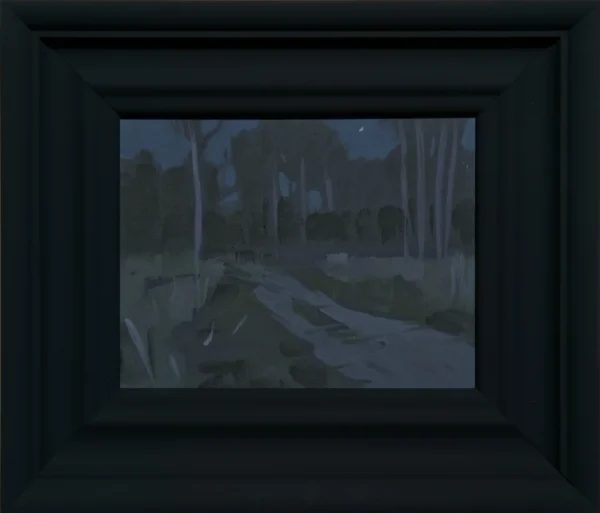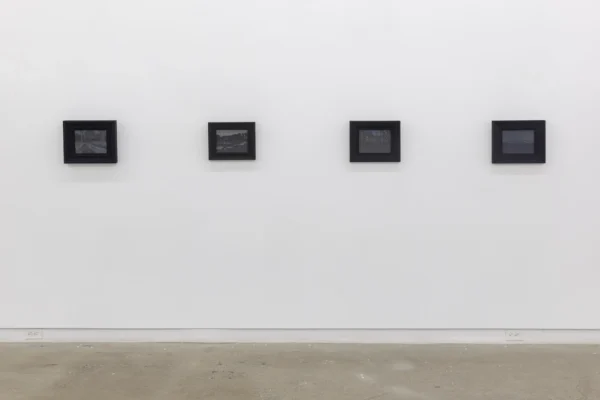Toronto Artist Jon Sasaki Races Against the Night to Capture Landscapes at Twilight
In his pursuit of capturing the landscape at its most dim, artist Jon Sasaki refuses to take shortcuts.

Courtesy of Clint Roenisch Gallery.
There are easier ways to paint a twilight landscape. You could snap a photo of the area, darken it in Photoshop, and paint in your studio. You could even use an AI prompt and be done with the whole thing in seconds. But Toronto artist Jon Sasaki has always preferred doing things the hard way.
For his new exhibition Making Do With the Photons That Linger After the Sun Has Set at Clint Roenisch Gallery, Sasaki spent 10 months painting en plein air—in the dark. Using a 3D-printed black paintbox of his own design (“the readymade ones were too beige,” he quips) and a palette limited to green, umber, navy, and grey, he worked outdoors through frostbite, mosquitoes, and the watchful eyes of coyotes and deer. Each of the 35 small panels captures the fragile half-hour of nautical twilight, when light dissolves, forms flatten, and the horizon disappears.

Making Do With The Photons That Linger After The Sun Has Set, Jon Sasaki (2025). Oil on plywood panel in artist’s frame. 12 x 14 inches (framed). Courtesy of Clint Roenisch Gallery.
Sasaki’s commitment to futility has long shaped his practice. In We First Need a Boat for the Rising Tide to Lift Us (2019), he built a vessel to carry himself back to shore while standing waist-deep in water. Bouncy Highrise (2015) saw him attempt to stack five inflatable castles. He’s also played with the myth of Canadian landscape painting and its cult of canonization. In a side room at Clint Roenisch, The Artist’s First Painting, Bronzed (1988/2007) pokes fun at self-mythmaking, while Microbes Swabbed From a Palette Used by Lawren Harris (2020) examines the lingering material traces of art history.
The new works hang in frames coated with Stuart Semple’s ultramatte black paint, which swallows surrounding light so the images appear to hover in their own shallow darkness. Tiny embers of red and orange punctuate Sasaki’s muted palette—small lights held against encroaching darkness. Red-dot stickers beside many paintings marking works sold echo those sparks. Overhead, dimmed fluorescent tubes bathe the gallery in perpetual half-light, forcing viewers’ eyes to adjust slowly, as Sasaki’s did.

Courtesy of Clint Roenisch Gallery.
These paintings wrestle with perception itself: what remains visible when the world fades? How do we hold on to precious moments of illumination? As time runs out and the sky dies, we’re left with an enduring image: an artist, ever persistent, feeling his way through the dark, searching for what can no longer be seen.




